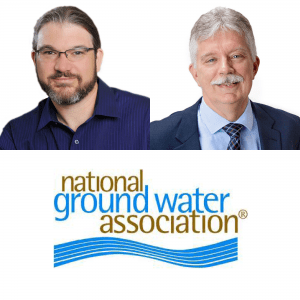DBS&A Presents on Surface Water, Groundwater and Recharge
 At the National Ground Water Association (NGWA) Water, Energy, and Policy in a Changing Climate conference in Albuquerque, New Mexico, DBS&A Vice President / Principal Hydrogeologist, Tony Morgan, PG, CHG, participated in a panel discussion on Surface Water Availability and Impacts to Groundwater and presented on the climate change regime anticipated for Ventura County, California over the next 20 years. DBS&A Geochemist Chris Wolf, PG, presented on Securing Water Supply for Albuquerque, New Mexico Using Managed Aquifer Recharge (MAR); co-authors include DBS&A Hydrogeologist Amy Ewing, PG, and Albuquerque Bernalillo County Water Utility Authority (Water Authority) Water Resources Division Manager Katherine Yuhas.
At the National Ground Water Association (NGWA) Water, Energy, and Policy in a Changing Climate conference in Albuquerque, New Mexico, DBS&A Vice President / Principal Hydrogeologist, Tony Morgan, PG, CHG, participated in a panel discussion on Surface Water Availability and Impacts to Groundwater and presented on the climate change regime anticipated for Ventura County, California over the next 20 years. DBS&A Geochemist Chris Wolf, PG, presented on Securing Water Supply for Albuquerque, New Mexico Using Managed Aquifer Recharge (MAR); co-authors include DBS&A Hydrogeologist Amy Ewing, PG, and Albuquerque Bernalillo County Water Utility Authority (Water Authority) Water Resources Division Manager Katherine Yuhas.
The Water Authority has developed a water resource management strategy titled Water 2120: Securing Our Water Future showing how Albuquerque can meet its water needs for the next century. The strategy emphasizes water conservation and the addition of surface water for water supply. The strategy includes using MAR to store treated surface water during low-demand periods and allow for drought resiliency. The Water Authority has completed demonstration testing of their Drinking Water Treatment Plant Large-Scale Recharge Demonstration Project (LSR) that includes a new aquifer storage and recovery (ASR) well. The LSR project is permitted to recharge 5,000 acre-feet per year with a goal of storing 50,000 acre-feet in the aquifer. The new well, ASR-01, is completed to 1,240 feet in sediments of the Santa Fe Group that are considered part of the Middle Rio Grande Basin. ASR-01 has a pumping capacity of 3,500 gallons per minute (gpm) and injection capacity of 1,750 gpm. Specific and injection capacities exceed 50 gpm per foot of drawdown or injection rise. During demonstration testing, recovered water, which is a mixture of groundwater and treated surface water, met New Mexico groundwater quality standards.
Tony Morgan discussed the anticipated effects climate change are anticipated to have on Ventura County, California. The Desert Research Institute (DRI) recently evaluated several global climate models and downscaled those models to give water agencies a more focused view of how the seasonal precipitation, temperature, and evapotranspiration conditions are distributed across the County and the Santa Clara River watershed. The DRI study detailed how the average daily maximum temperature is anticipated to increase by 2-3o F in coastal areas and 3-5o F in inland areas over the period from 2021-2040. Seasonal precipitation models suggest that winters may be slightly wetter with fewer, more intense runoff events. These events present opportunities for enhanced MAR, such as flood-MAR or ag-MAR concepts.
